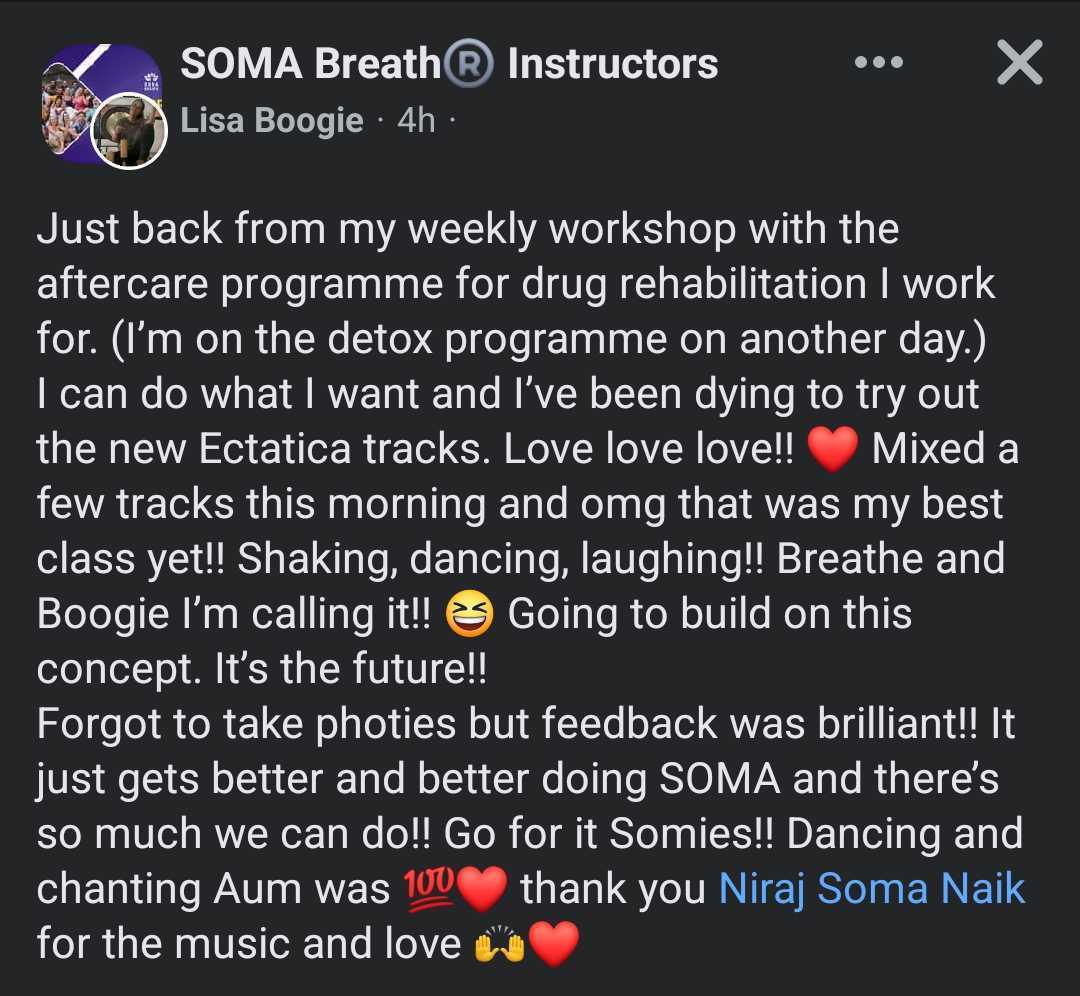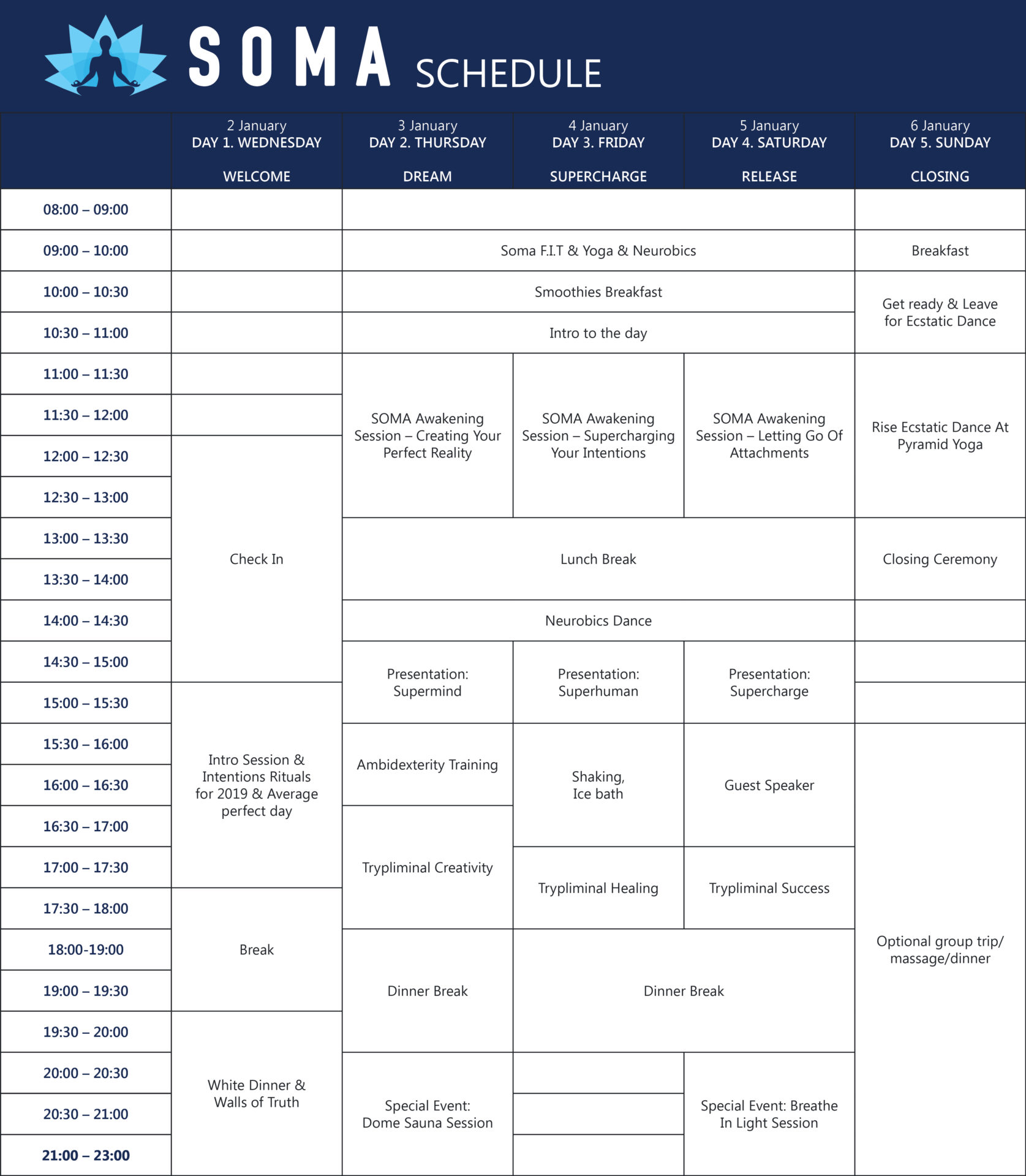SOMA Breath vs. Holotropic Breathwork®
What are the differences and how they compliment each other.
The journey of breathwork in humanity has been long.
Many centuries ago, tribes would gather around the fire and “talk to the gods.” Following the beat of the drums, they would chant, breathe in unison, heal, and "download wisdom from beyond".
These practices were somehow written down, and they have survived the test of time through the Rig Vedas.
The four Rig Vedas are some of the oldest known scriptures in the world. These texts contain hymns, stories, philosophy, and guidance on rituals that were central to the Vedic religion, including early forms of breathwork and meditation.
Although yogis have been practicing these techniques for thousands of years, over the past decades, breathwork has gained a lot of momentum and is now sneaking its way into the mainstream world.
More and more, people are talking about breathwork. Different types of certifications and modalities have appeared, and it’s important to understand the differences so you can practice the one you actually need.
Holotropic Breathwork®
Many associate breathwork with fast, cathartic breathing. Some love it, while others can’t take it. However, this style of breathwork is actually one single technique and modality known as Holotropic Breathwork®, which is a registered trademark of the Grof Foundation, developed by psychiatrist Dr. Stanislav Grof and his wife Christina Grof in the 1970s.
The term "holotropic" comes from the Greek words "holos" (whole) and "trepein" (to move towards), reflecting the practice's goal of moving towards wholeness.
Benefits of Holotropic Breathwork®
This technique has the potential to create powerful spiritual experiences. People have described it as a way to access “non-ordinary states of consciousness.” It can help individuals release deep-seated emotions and trauma, allowing space for spiritual insights and a sense of connection to a larger reality. It can lead to significant personal growth and transformation.
How to Do Holotropic Breathwork®
Holotropic Breathwork® can be done in different ways, but it usually involves accelerated breathing techniques combined with emotional music in a safe and supportive setting. Usually led by trained instructors, participants lie down, close their eyes, and follow the instructions. The sessions often include a period of art-making or journaling to help integrate the experiences.
Is This for Everyone?
Holotropic Breathwork® has produced amazing results over the years, and many people love it. However, there’s one detail about it that divides opinions. As effective as Holotropic Breathwork® can be for emotional release and spiritual experiences, it can also be stressful on the body. It’s usually performed through fast mouth breathing, which we know can have negative effects on health if done too often or chronically over extended periods of time. So Holotropic Breathwork® is not designed to be practiced daily but rather as a “once in a while” experience.
SOMA Breath: An Updated and More Complete Version of Breathwork
Since Holotropic Breathwork® was created, science and research on breathwork have come a long way. Recently, Cambridge University joined the trend and did a study on one of the newest schools: SOMA Breath.
This new modality has only been around for about 7 years, but it’s already gained the recognition of many leading organizations in the holistic wellness space. One of the founding philosophies of SOMA Breath is that there’s no one-size-fits-all approach. The unique quality of this movement is that it offers a wide range and variety of techniques that can tackle different needs.
It offers a complete holistic approach to wellness, targeting physical health, mental clarity, emotional balance, and spiritual growth. It’s designed to be practiced daily as it stimulates healing and deep relaxation while improving physical and mental health.
One thing that has blown people away about SOMA Breath is that it includes all of the breathwork techniques available, with scientific evidence to back up their claims. Because it’s heavily based on scientific research and a deep understanding of physiology, a certified SOMA Breath Instructor has the skill to use all modalities, including the same techniques and principles of Holotropic Breathwork® (and pretty much any breathwork school you can think of).
After all, the techniques all come from the same ancient wisdom of pranayama. As a certified SOMA Breath Instructor, people have a whole pharmacy of breathing techniques available, so they can literally help anyone reach the next level in their lives. And the results have been amazing; check out the comment below from one of our Instructors and how much fun she's having helping people with drug rehab!
So What Modality to Choose?
This article is obviously biased because I will tell you to go with SOMA Breath Certification Training. Once you go through the science of breathwork at the level that we have understood it, you will see everything in a new light, and from there, you can use the modality that you want for yourself and for your clients, depending on the desired outcome.
That said, many people have fallen in love with Holotropic Breathwork®, and the work they have done to bring breathwork into the mainstream consciousness is to be admired and respected.
We owe much of our accomplishment to the work they have done before us, and we’re all on the same path: To Elevate Humanity One Breath at a Time.
Try SOMA Breath Right Now
Here's one of SOMA Breath's most popular free 20 mins meditation. Get to know the founder, Niraj Naik, as he explains the technique and then dive deep into this euphoric journey for deep transformation
We hope you enjoyed the meditation.
Explore everything we have to offer here >>
Much love and positive energy
Peace
Orlando
SOMA Breath Team.


